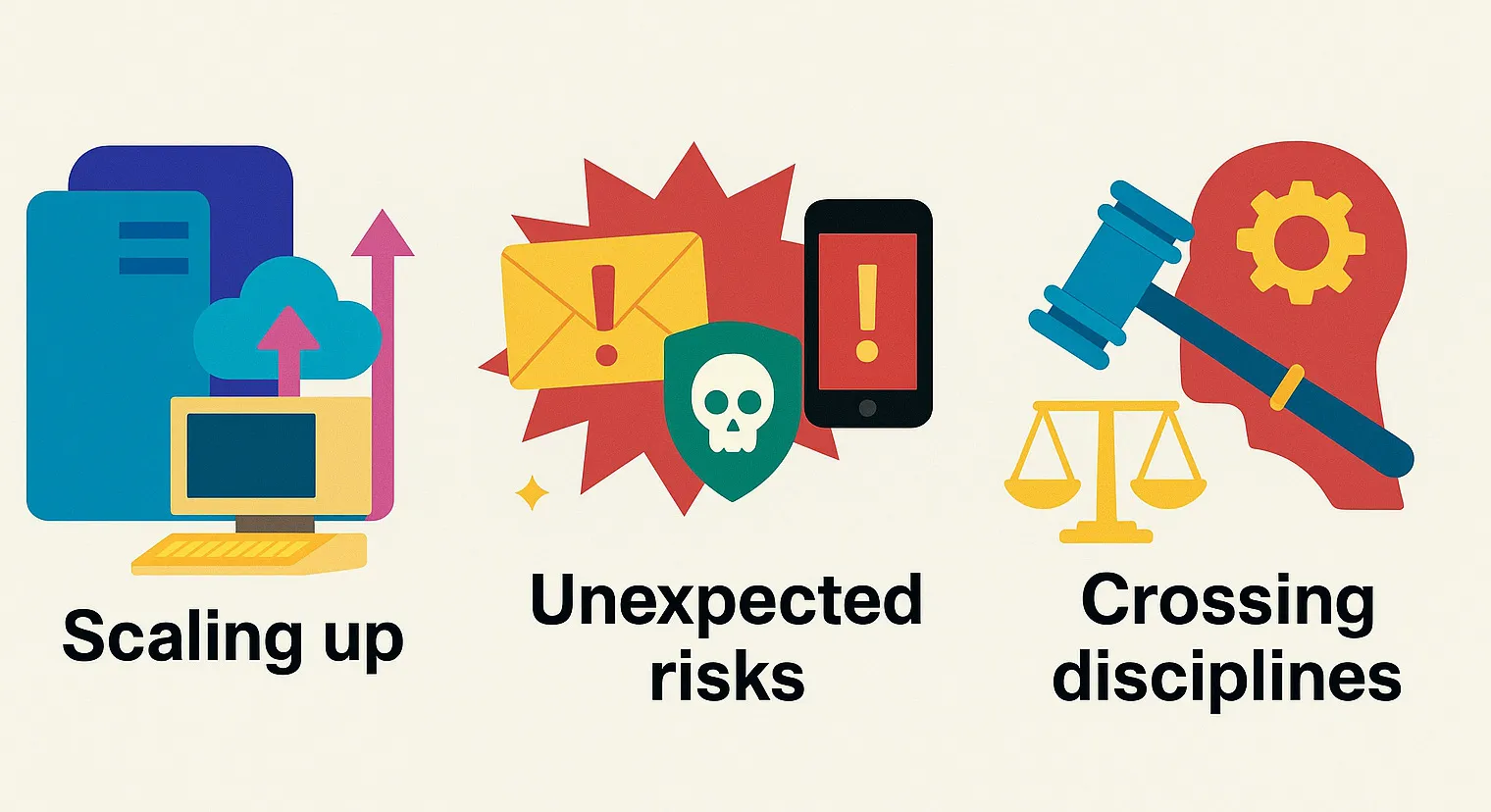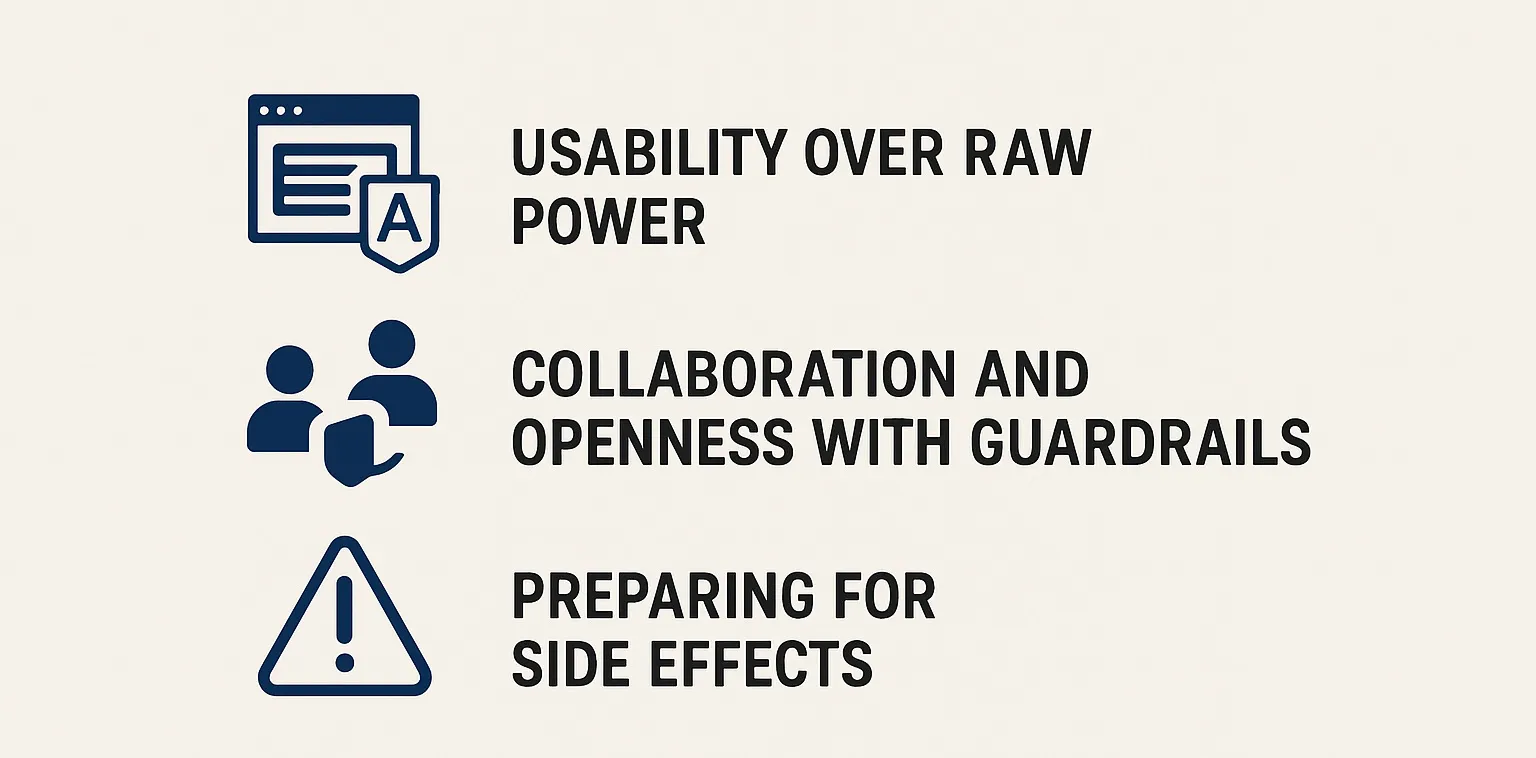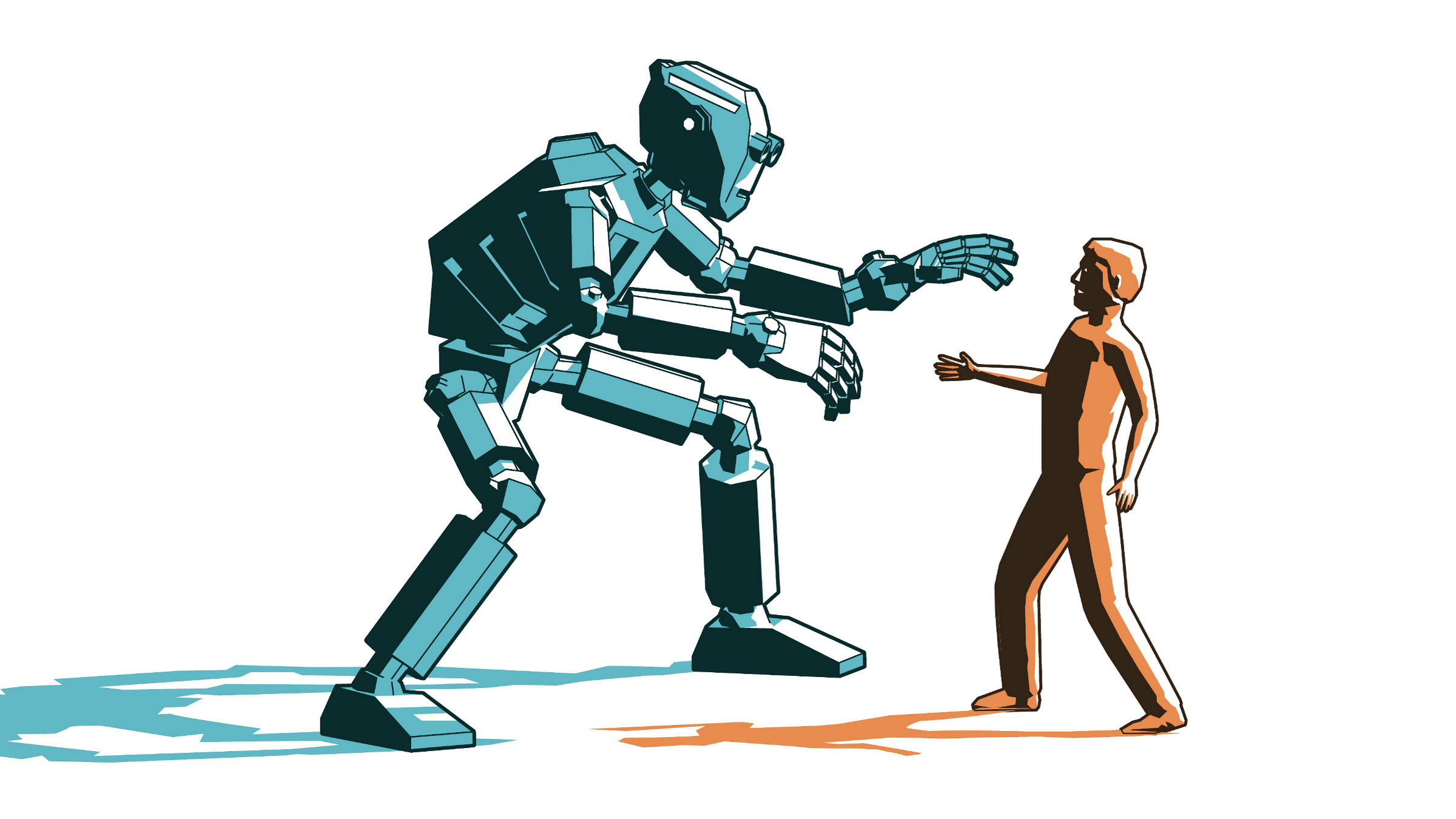History shows that all revolutions follow a certain pattern. The rise of programmable computers, the explosion of the Internet, the widespread adoption of personal computers, and the growth of open-source platforms seemed impossible just a few years ago. But then they became sensations.
Today, AI is on that path. What seemed impossible at first is now continuously developing. Will AI reshape our world like the Internet did? Or will it face challenges? Can AI expand the human mind, helping us think, create, and solve problems in ways we never imagined? Or will it be a big failure?
The answers to these questions can be found by analyzing past patterns. In this post, we will discuss why the past holds the blueprint for AI’s future, what history warns about AI, and how yesterday’s patterns shape its future.
Look Back to See AI’s Future
Suppose you time-travel to 1975. You are holding the first Altair microcomputer. You can feel that something big is coming, but you can’t predict exactly what’s going to happen.
Now fast-forward to the present. You can see the transformation from room-sized calculators to smartphones in every pocket. To predict what changes AI will hold for the future, we must look back. The past is a blueprint.
Why study earlier shifts? Because they teach us:
- How people adapted: When was adoption rapid, when slow?
- What risks emerged: Past problems are often repeated in new forms.
- Which choices mattered: Design, openness, regulation, usability.
As AI is integrated into our day-to-day lives, it’s important to ask: How did past computing technologies get accepted? How did they break, get fixed, or cause disruption? These lessons guide how we build AI systems and how we govern them.
Early Breakthroughs and Their Lessons for AI
Following are four breakthroughs in computing and what they taught us about AI:
- Programmable Computers
In the 1940s and 50s, early machines like ENIAC and UNIVAC were built for purposes like ballistic computing, weather prediction, and code breaking. Then came stored-program computers, machines you could load with different programs and repurpose hardware.
Lesson: Flexibility and design choices shape how broadly a technology is accepted by users. AI is adopted at a larger scale because of the architecture of models and APIs. Also, its adoption in the future will be based on how easily developers can adapt systems.
Consider an AI certificate generator tool for online courses. If the underlying system is rigid and only designed for one format, it serves a narrow user base, but if it’s flexible, then it has a better chance of scaling rapidly. That adaptability is the main reason behind the shift from single-purpose machines to programmable computers.
- The Internet
The dot-com era showed us a world that could stay interconnected easily. People who had never met could send messages, goods, and ideas. Data started growing as people started surfing online.
Protocols like TCP/IP and HTTP were standard, open, and extensible. Because of that, the use of the Internet grew through social media, e-commerce, streaming, and remote work.
Lesson: Once systems connect, growth can be massive. For AI, interconnectivity, such as sharing data, models, and platforms, can confer power, but also poses risks of misuse or cascading failures.
Take the example of AI traffic analytics tools. When cities deploy sensors and AI-powered cameras, they begin with counting vehicles. Soon, the same infrastructure will be used to monitor parking, pedestrian flow, emergency response, and commercial advertisement placements. The scope expands fast.
That’s powerful, but regulatory, privacy, and bias issues may also occur. These weren’t central at day one.
- Personal Computers
Until the late 1970s and early 1980s, computers were found only in labs or big companies. Then came the revolutionary Apple II, the IBM PC, and Commodore machines. These were installed in homes, schools, and small businesses.
Suddenly, computing power was accessible not just to engineers, but to creative writers, accountants, and kids who began learning to code.
Lesson: Accessibility drives adoption faster than raw technical power. Users need a machine that works, is affordable, fits their needs, and is easy to use.
Take the example of a startup that builds a user-friendly AI model for small business accounting. The accuracy of the model is not the best. However, the tool is cost-effective and the interface is simple. Integrating the tool with existing systems is seamless. These reasons will lead people to adopt the tool.
- Open Source Movement
Open source software was a huge innovation. With open source, people began collaborating on projects, sharing code, identifying bugs, and refining each other’s work through the platforms.
Lesson: Shared innovation moves faster than in-house systems. Open source helps identify risks, bugs, security loopholes, and unintended consequences that an in-house team may miss. Open-source allows all like-minded individuals to connect and contribute.
In 2024, developers worldwide made over 5.2 billion contributions to more than 518 million open-source, private, and public projects on GitHub. This highlights the potential growth of collaborative development in AI.
When a researcher releases an open dataset and open model code, thousands of people can suggest various things. They may find adversarial vulnerabilities, bias, and data poisoning before deployment. These observations may be missed with closed systems. Open source allows people to share their ideas and grow together.
Patterns of Risk: What History Warns About AI

The past is interesting, but it presents us with key challenges we must solve. Let us look at a few of them.
Scaling Up: From Mainframes to the Cloud, to AI models
The world of computing started with mainframe computers; they were bulky and expensive. Then the client-server architecture, personal computers, and cloud computing were developed. Scaling the innovation to the next level was always costly because it included the costs of power, cooling, or maintenance.
AI is scaling at a huge level. Models are trained and deployed across multiple devices.
Traditionally, computing systems required stability to ensure they were growing. But these days, AI infrastructure depends on uptime monitoring to ensure uninterrupted performance. Continuous uptime monitoring tracks the server performance, API latency, and response accuracy in real time. This prevents downtime and data loss.
A combination of uptime monitoring and predictive analytics ensures that organizations can maintain high availability, trust, and quality of service.
Unexpected Risks
Positive developments may come with something negative. For example, the growth of email opened the door to phishing spam. The growing use of Web technology gave rise to malware, phishing, and fake news. With the spread of smartphones, privacy and surveillance concerns began to grow.
AI comes with risks like deepfakes, biased decision-making, and data misuse.
Users can take control of their digital privacy using tools like Incogni. They can ask data brokers to remove personal data from their databases. It is an important step in an AI-powered world where personal information can be scraped, sold, or misused.
Crossing Disciplines
Computing breakthroughs are not magic. Developments need time, effort, and a proper mindset. Lawyers, thinkers, and sociologists ask: How does this affect privacy? What is ownership of data? Are their psychological impacts of constant connectivity? Asking these questions helps ensure that problems are addressed before they occur.
Therefore, when we build systems, we need ethicists, social scientists, and policy experts. Having the answers to questions like “How will people trust this?” or “How will this affect jobs?” is important.
How Yesterday’s Patterns Shape Today’s AI Evolution

Let us discuss what actions we can take to avoid repeating old mistakes.
Usability or Raw Power
Why did personal computers became so popular? It wasn’t because they had the biggest silicon power; it’s because they were accessible to everyone. The AI tools of today and tomorrow will succeed when they are easily accessible and usable.
For example, by incorporating tools like an AI humanizer in writing tools. Integrating a feature that humanizes a tool’s AI-generated content makes the tool accessible to developers, educators, or small business owners. It ensures that a tool is useful and accessible to everyone.
Here’s a tip: Build any model with the use case in mind. Ask if the model is useful and accessible to everyone? If yes, then go for it.
Collaboration, with Guardrails
Open source and collaboration increase innovation. Shared datasets, model benchmarks, and community audits reveal failures early. But openness also needs governance. Clearly mentioning things like who owns the data, what the privacy guarantees are, and what the licensing terms are ensures that your audience knows what is happening with their data.
Preparing for Side-Effects
All technological breakthroughs come with some side effects. Electric power generation brings pollution, vehicles cause accidents, and the Internet brings cybercrimes.
The side effects of AI are bias, job displacement, misuse, and misinformation. Organizations must plan for these.
Before deployment, run impact assessments. Think about what could go wrong, and for whom. Include marginalized groups. Also, prepare for situations like fallback modes, the ability to shut off or correct errors, and ongoing monitoring.
Adoption Curves Ahead
Technologies follow S-curves. The initial stages will see slow adoption, followed by rapid growth, and then a plateau. Stakeholders may misinterpret slow early growth as failure, or underestimate rapid later change.
Those working in AI product development or policy should find out possible adoption paths. Consider using early pilot programs and large-scale rollouts to find out the problems first.
Takeaways for Researchers and Practitioners
Researchers, engineers, startup founders, and policy makers can work on the following areas:
- Design for understandability
Make models explainable. Use clear documentation. Provide user education. If people can’t understand how an AI tool works, they may not use it at all or misuse it. - Share knowledge openly when possible
Publish benchmarks, data leaks, and negative results to showcase that you are transparent about your work. Openness speeds up progress and helps avoid repetitive mistakes. - Think about long-term impacts, not just immediate performance
Performance metrics like speed and accuracy are important, but consider other factors like fairness, sustainability, environmental cost, and social effects. This ensures that the development of a particular technology is safe. - Build ethical and regulatory awareness into the workflow
Include ethicists, legal experts, and privacy officers from the early stages so that they can keep an eye on legal issues. Don’t treat regulation as an afterthought. - Focus on usability and accessibility
Inclusive design matters: for different languages, Internet speeds, devices, and literacy levels. AI tools shouldn’t only serve those with high-end devices or technical backgrounds.
Lessons From the Past, Guidance for the Future
AI is the next big wave in computing, but history shows us that breakthroughs always come with opportunities and challenges. We can make smarter choices in the future if we know the lessons of past breakthroughs as well. These include:
- Programmable computers taught us that flexibility helps in scaling a particular technology into something big.
- The Internet showed how connection helped in unpredictable growth.
- Personal computers proved that systems that are easily accessible will expand more easily.
- Open source highlighted the speed of shared innovation.
Each shift came with challenges like spam, malware, and privacy issues that must be watched for AI as well. The past has the power to tell the future. Therefore, analyzing past breakthroughs helps in predicting the future.

Richa Gupta is a Content Marketing Specialist with over seven years of experience. She has worked with various SaaS brands to create content strategies that boost organic traffic and generate qualified leads.



Join the Discussion (0)
Become a Member or Sign In to Post a Comment